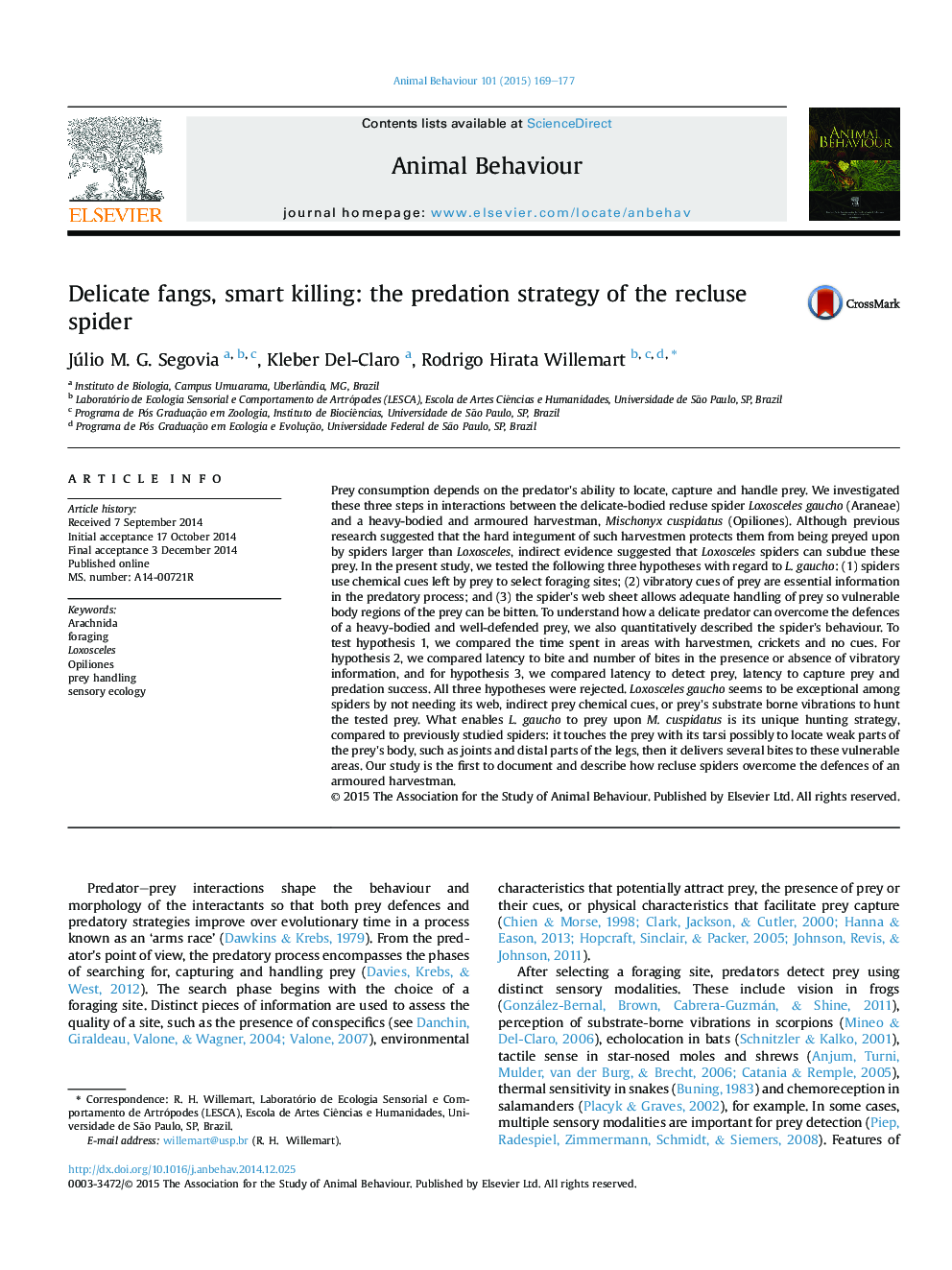| Article ID | Journal | Published Year | Pages | File Type |
|---|---|---|---|---|
| 8490139 | Animal Behaviour | 2015 | 9 Pages |
Abstract
Prey consumption depends on the predator's ability to locate, capture and handle prey. We investigated these three steps in interactions between the delicate-bodied recluse spider Loxosceles gaucho (Araneae) and a heavy-bodied and armoured harvestman, Mischonyx cuspidatus (Opiliones). Although previous research suggested that the hard integument of such harvestmen protects them from being preyed upon by spiders larger than Loxosceles, indirect evidence suggested that Loxosceles spiders can subdue these prey. In the present study, we tested the following three hypotheses with regard to L. gaucho: (1) spiders use chemical cues left by prey to select foraging sites; (2) vibratory cues of prey are essential information in the predatory process; and (3) the spider's web sheet allows adequate handling of prey so vulnerable body regions of the prey can be bitten. To understand how a delicate predator can overcome the defences of a heavy-bodied and well-defended prey, we also quantitatively described the spider's behaviour. To test hypothesis 1, we compared the time spent in areas with harvestmen, crickets and no cues. For hypothesis 2, we compared latency to bite and number of bites in the presence or absence of vibratory information, and for hypothesis 3, we compared latency to detect prey, latency to capture prey and predation success. All three hypotheses were rejected. Loxosceles gaucho seems to be exceptional among spiders by not needing its web, indirect prey chemical cues, or prey's substrate borne vibrations to hunt the tested prey. What enables L. gaucho to prey upon M. cuspidatus is its unique hunting strategy, compared to previously studied spiders: it touches the prey with its tarsi possibly to locate weak parts of the prey's body, such as joints and distal parts of the legs, then it delivers several bites to these vulnerable areas. Our study is the first to document and describe how recluse spiders overcome the defences of an armoured harvestman.
Related Topics
Life Sciences
Agricultural and Biological Sciences
Animal Science and Zoology
Authors
Júlio M.G. Segovia, Kleber Del-Claro, Rodrigo Hirata Willemart,
